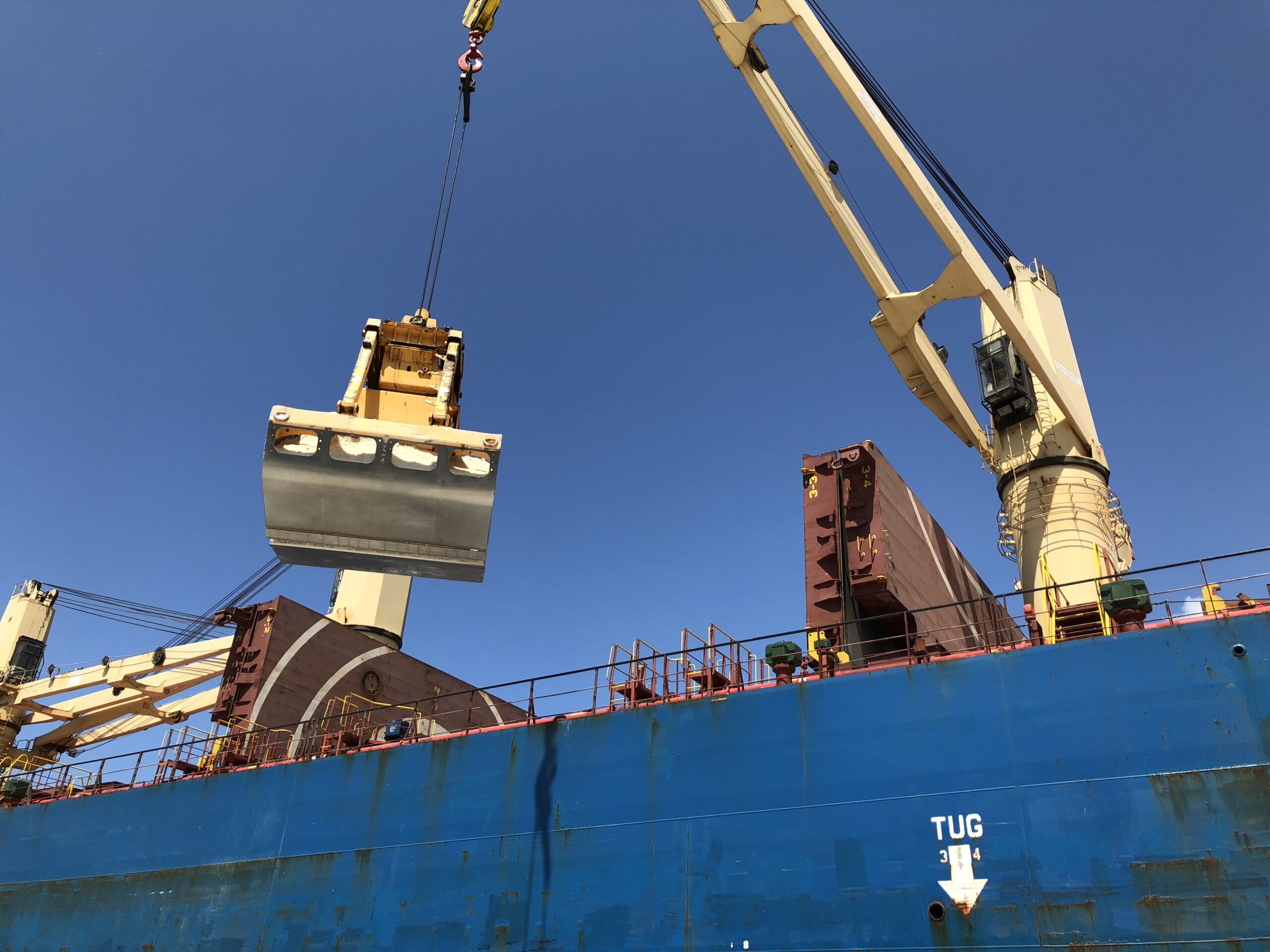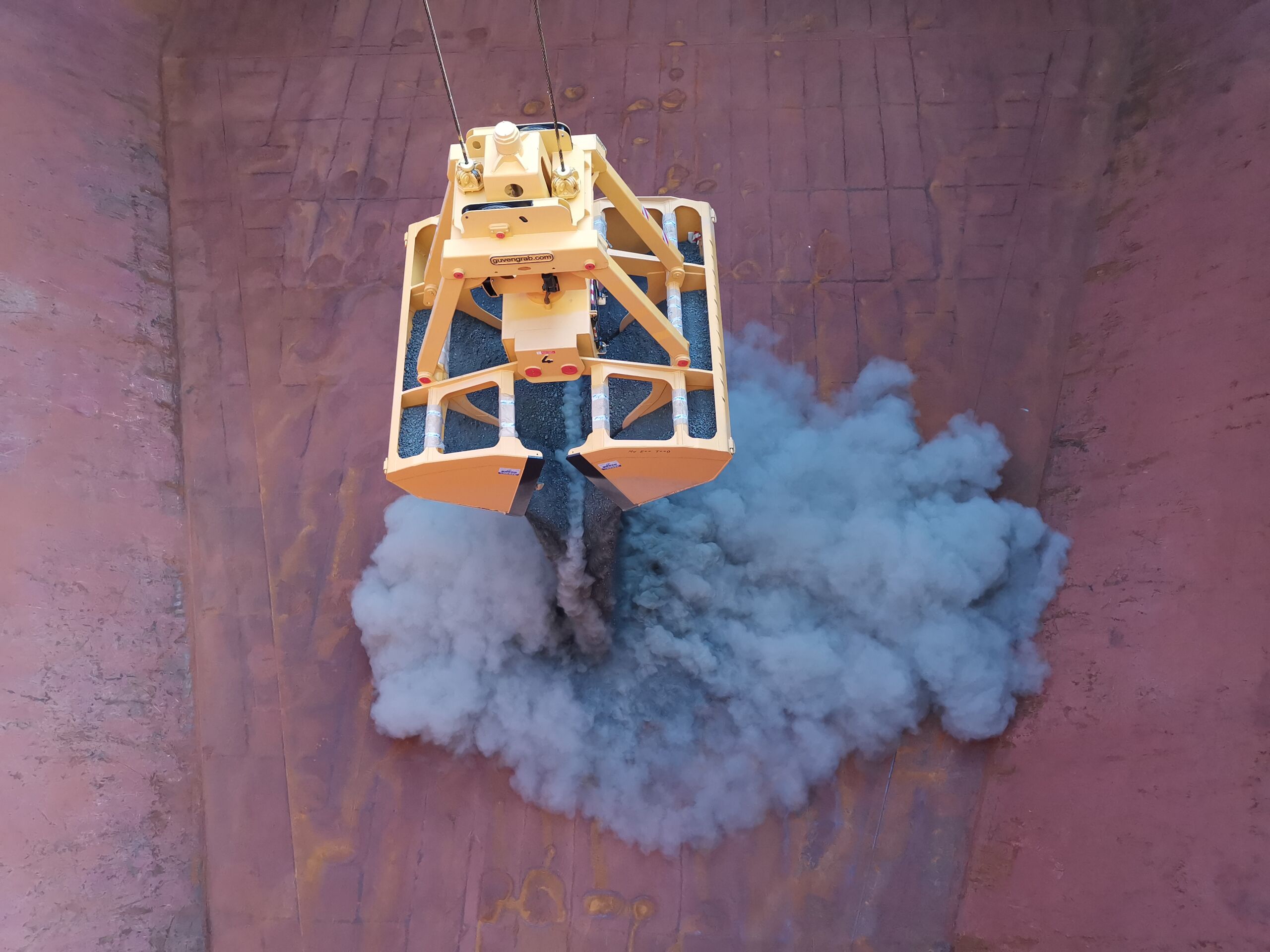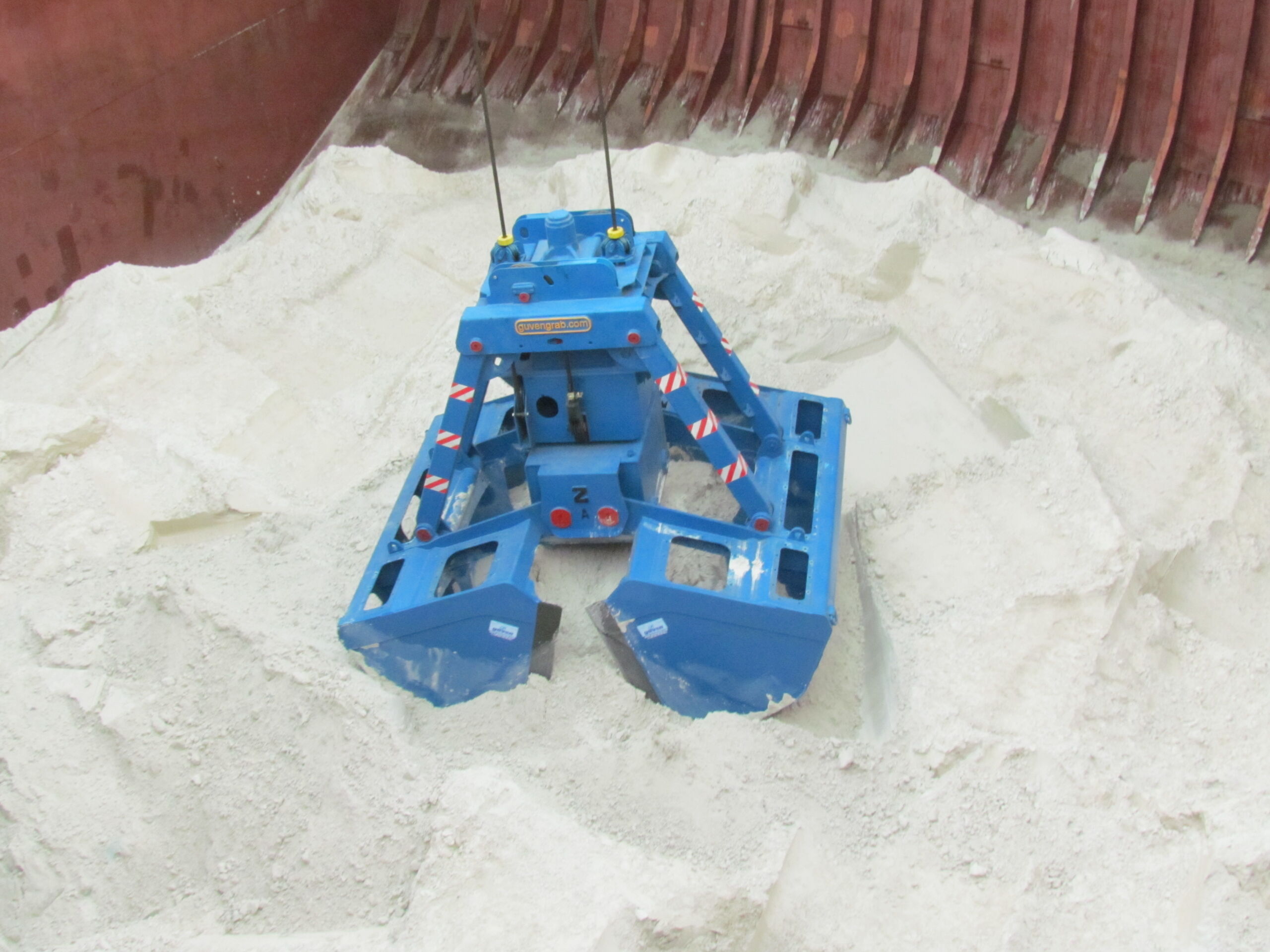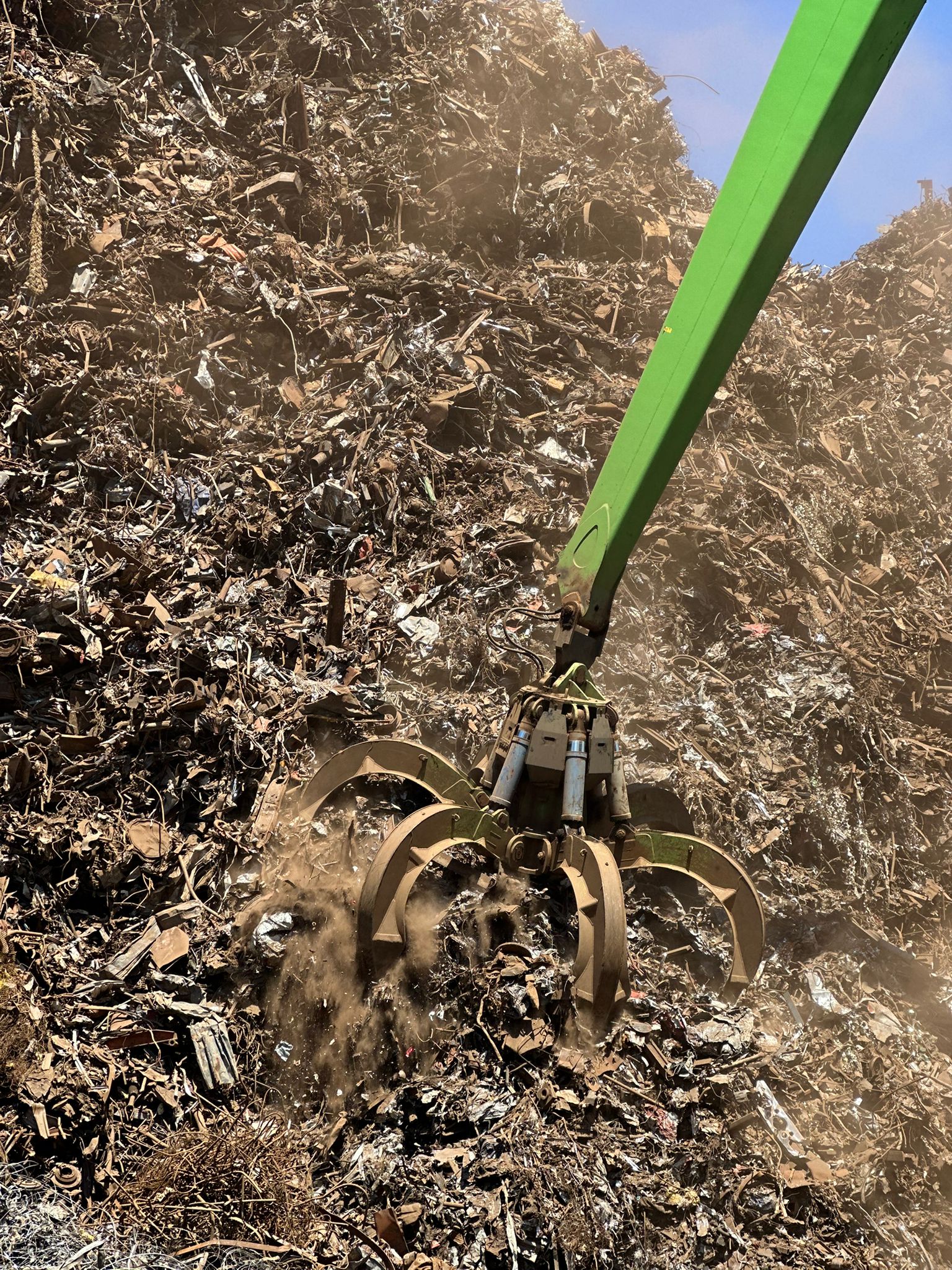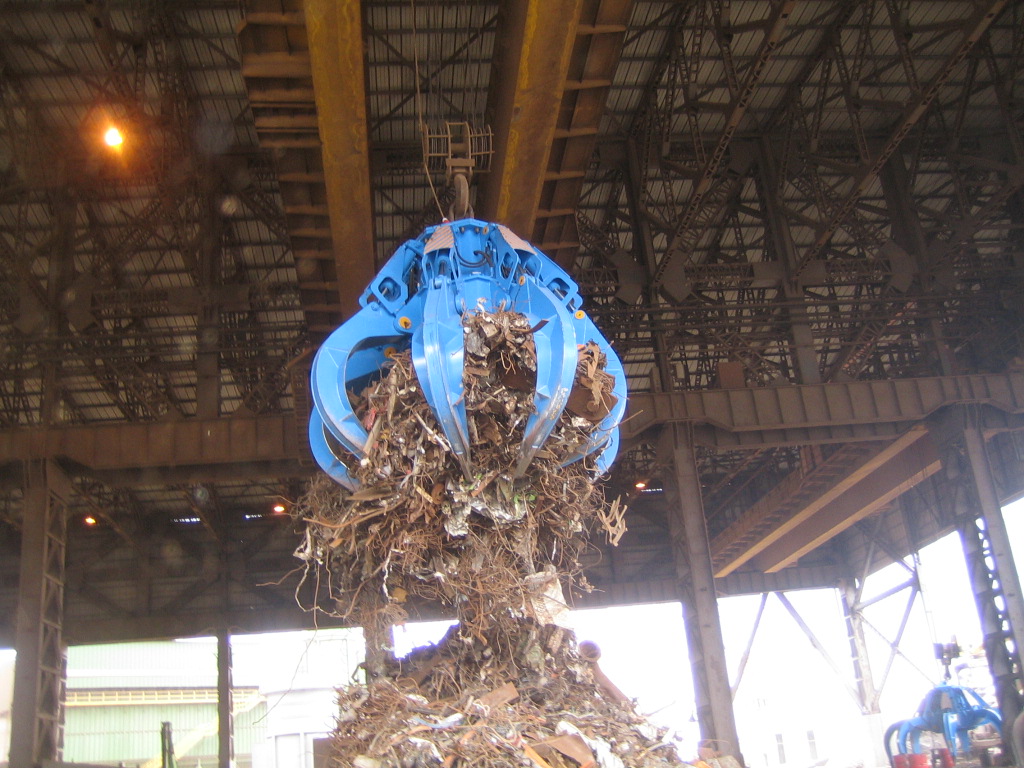What Is the Difference Between Deck-Mounted and Crane-Mounted Grabs?
Understanding the Two Main Grab Configurations
In bulk cargo operations, the grab is one of the most critical components determining overall handling efficiency. Whether the material being moved is coal, clinker, grain, or scrap metal, the choice of grab type -and more importantly, its mounting configuration- directly affects cycle time, energy consumption, and operational safety.
Two of the most common configurations are deck-mounted and crane-mounted grabs. Although they serve the same fundamental purpose, transferring bulk materials from ship to shore or vice versa, the way they are integrated into the vessel or terminal setup differs significantly. Each comes with distinct engineering, space, and maintenance considerations that can make one option more suitable than the other, depending on the operating environment.
In this article, we’ll examine the key technical and practical differences between deck-mounted and crane-mounted grabs, offering a clear understanding of how to choose the right configuration for your vessel or terminal setup.
Installation: What Sets These Systems Apart
The way a grab is mounted defines not only how it operates but also how it interacts with the vessel or terminal infrastructure. Installation is therefore the first major point of distinction between deck-mounted and crane-mounted systems. While both aim to streamline material handling, the methods of attachment, power integration, and setup logistics differ substantially.
Deck-Mounted Setup
A deck-mounted grab is installed directly on the ship’s deck or on a stationary platform at a terminal. It is typically an independent system, meaning it operates with its own hydraulic or electric drive, often powered by a dedicated power pack. This configuration is ideal for vessels or facilities that require permanent material-handling equipment and where space and power can be allocated specifically for that purpose. The main advantage lies in its self-contained nature. It doesn’t depend on the crane’s lifting or hydraulic system, which allows simultaneous operation of multiple units on the same vessel. However, the installation process involves structural reinforcement of the deck and precise alignment to ensure the grab’s stability under heavy dynamic loads.
Crane-Mounted Setup
In contrast, a crane-mounted grab connects directly to the crane’s hoisting mechanism, typically via hooks, ropes, or a hydraulic connection. This setup allows for rapid deployment, making it particularly suitable for mobile harbour cranes, floating cranes, and shipboard cranes. Installation is relatively simple: as long as the crane’s load rating and hook type match the grab’s design, the unit can be connected and operated immediately.
Because of this plug-and-play nature, crane-mounted grabs offer greater operational mobility, the same grab can be detached and used on another crane if needed, making it a more flexible solution for multi-site operators.
Installation Time and Logistics
Deck-mounted systems often require longer installation times, involving welding, electrical cabling, and hydraulic line setup. In contrast, crane-mounted grabs can be operational within hours. The trade-off lies in permanence: deck-mounted grabs are stable and always ready for use, while crane-mounted units can be moved, replaced, or upgraded with minimal downtime.
Space Requirements and Operational Flexibility
Beyond installation, one of the most practical factors influencing grab selection is how much space each configuration occupies and how flexibly it can operate within that space. On vessels or terminals where deck layout and crane positioning are tightly constrained, these differences become particularly important for optimizing workflow and safety.
Deck-Mounted Systems
Deck-mounted grabs occupy a fixed footprint on the vessel or terminal platform. While this ensures stability and continuous readiness, it also limits how much usable deck space remains for other operations. When multiple grabs or additional equipment (such as conveyors or hoppers) share the same surface, careful planning is essential to prevent congestion. However, the fixed setup also provides an advantage in predictability and stability. The grab’s operational range is defined, which can be beneficial for repetitive, high-frequency loading tasks such as in cement or fertilizer terminals. Because these systems often include built-in control cabins or power packs, operators have instant control access without needing to rely on crane operators for every move.
Crane-Mounted Systems
Crane-mounted grabs, by contrast, offer superior mobility and reach. Since they hang from the crane’s hoist system, they can swing across large radii and handle materials across multiple holds or stockpiles without repositioning. This makes them ideal for shipboard applications where flexibility is key especially when handling different cargo types in a single operation. When the grab is detached, the crane can also be used for other lifting purposes, giving terminals and vessel operators maximum utilization of their equipment. The absence of a permanent deck structure also means easier maintenance and storage when the grab is not in use.
Operational Flexibility
In summary, deck-mounted grabs prioritize stability and readiness, making them optimal for fixed-point, repetitive loading operations. Crane-mounted grabs, on the other hand, excel in versatility and reach, adapting more easily to varying ship sizes, cargo types, and operating conditions. The right choice depends on whether a port or vessel values dedicated performance or multi-purpose flexibility more.
Crane Compatibility and Weight Limits
Matching the right grab to the right crane is one of the most crucial engineering decisions in bulk handling. Both deck-mounted and crane-mounted grabs impose unique demands on the cranes that support them, not only in terms of lifting capacity but also regarding the crane’s structure, stability, and control systems.
Deck-Mounted Grabs: Independent Operation, Heavier Structure
Deck-mounted systems are self-supporting units, meaning they do not rely on the crane’s hoisting capacity for operation. Instead, they are typically powered by onboard hydraulic or electro-hydraulic systems. Because of this independence, the crane is used only for positioning or feeding, not for lifting the grab’s full operational weight. However, this advantage comes at a cost deck-mounted units tend to be heavier and more complex structurally, requiring solid anchoring and deck reinforcement to absorb the dynamic stresses during loading cycles. This makes them better suited for larger vessels or shore-based installations with sufficient structural capacity and available space.
Crane-Mounted Grabs: Dependent on Crane Performance
Crane-mounted grabs, whether mechanical or hydraulic, are directly dependent on the crane’s lifting power and control precision. Their total weight -including the grab body and the material load- must stay well within the crane’s Safe Working Load (SWL). For instance, a 10 m³ electro-hydraulic clamshell grab loaded with heavy bulk such as iron ore can exceed 25 tons, requiring a crane with adequate lifting power and stable outreach. This is why the grab capacity is often customized based on the exact crane model. Guven Grab engineers, for example, routinely tailor grab designs to match specific cranes such as Sennebogen 870, Liebherr LH110, or Gottwald HMK series, ensuring optimal load balance, swing control, and performance longevity.
Load Distribution and Stability
In crane-mounted systems, load distribution plays a critical role in maintaining operational safety. A poorly balanced grab can cause the crane boom to oscillate or even destabilize the vessel during offshore operations. Deck-mounted systems, however, distribute forces across the vessel structure rather than the crane boom, making them more stable under heavy-duty, repetitive operations, especially when handling dense materials like clinker or scrap metal.
Maintenance and Repair Implications
The long-term cost and reliability of a grab system are heavily influenced by how easy it is to maintain and repair. Each mounting type presents distinct advantages and challenges when it comes to service access, downtime, and exposure to environmental stress.
Deck-Mounted Grabs: Accessible but Exposed
One of the biggest advantages of deck-mounted systems is their easy accessibility. Since the unit is fixed on the deck, technicians can reach hydraulic lines, cylinders, and control systems without dismantling the crane or interrupting other operations. Routine checks and part replacements can be done directly on site. However, this same exposure also introduces a drawback, deck-mounted grabs are constantly subjected to the marine environment, including salt, moisture, and UV radiation. Without proper surface treatment and corrosion-resistant materials, components can degrade faster. For this reason, Guven Grab designs its deck-mounted systems with marine-grade steel, specialized sealing, and reinforced coatings to extend lifespan and minimize corrosion-related failures.
Crane-Mounted Grabs: Protected but Less Accessible
Crane-mounted grabs benefit from being detachable, which means they can be brought ashore or moved to a maintenance workshop when needed. This keeps the vessel deck clear and avoids interference with other operations. Yet, in practical terms, maintenance access is more limited during operation, technicians often need the crane itself to maneuver or secure the grab before servicing. Furthermore, if the grab is electro-hydraulic or radio-controlled, downtime may also involve disconnecting electrical and hydraulic systems. The maintenance process, therefore, can temporarily remove the crane from service, which is an important operational consideration for ports with limited equipment availability.
Component Lifespan and Spare Part Planning
Both configurations rely on wear-intensive components -pins, bushings, hydraulic seals, and cutting edges- that require regular inspection and replacement. Because deck-mounted grabs typically work longer duty cycles, they benefit from onboard spare part storage and quick-swap components. Crane-mounted units, on the other hand, gain from interchangeability, a single spare grab can be attached to another crane, keeping operations running even during repair. Guven Grab supports both configurations with 24-hour global spare part logistics and modular design principles, ensuring maintenance tasks are efficient and downtime is minimized.
Which One Is Right for Your Vessel or Terminal?
Choosing between a deck-mounted and a crane-mounted grab ultimately depends on your operational setup, handling volume, and flexibility requirements. Both configurations are proven technologies, but their efficiency depends on how well they align with your vessel’s or terminal’s workflow, crane type, and maintenance strategy.
Decision Factors to Consider
- Crane Type and Capacity: If your cranes already have sufficient Safe Working Load (SWL), a crane-mounted grab is often the most efficient and cost-effective choice.
- Space Availability: If your deck layout allows a permanent system, a deck-mounted setup provides unmatched stability.
- Power Source and Control Preference: Deck-mounted grabs are generally self-powered, while crane-mounted models depend on the crane’s power or hoist.
- Operational Pattern: Repetitive materials like grain or cement favor fixed deck-mounted systems, while mixed-cargo operations benefit from crane-mounted flexibility.
- Maintenance Resources: If maintenance is handled in-house, deck-mounted systems are practical; otherwise, detachable crane-mounted systems simplify off-site servicing.
Application Scenarios
- Bulk Carriers: Typically favor crane-mounted grabs for their detachable nature and wide reach.
- Floating Cranes and Barges: Prefer deck-mounted grabs for stability and power independence.
- Port Terminals: Often operate both systems, deck-mounted for dedicated berths, crane-mounted for mobile cranes.
Guven Grab Recommendation
At Guven Grab, both configurations are designed and engineered for durability, precision, and safety. Our crane-mounted clamshell and orange peel grabs are optimized for compatibility with Sennebogen, Liebherr, and Gottwald cranes, while our deck-mounted electro-hydraulic systems are built for continuous heavy-duty port use. Guven Grab engineers conduct application-based evaluations, considering crane specs, material density, and site logistics to deliver tailored, performance-optimized solutions.
Optimizing Efficiency with the Right Grab System
In bulk material handling, there is no universally “better” grab configuration, only the one that best fits your operation’s structure, space, and performance goals. Deck-mounted grabs deliver unmatched stability and readiness for fixed-point, high-volume terminals. Crane-mounted grabs offer the flexibility and portability required for vessels and mobile cranes handling diverse materials.
The difference lies in your workflow: whether you need a dedicated, always-on system or a versatile, re-deployable solution. Selecting the correct configuration boosts productivity, minimizes maintenance costs, and ensures long-term equipment safety.
With over 40 years of engineering experience and more than 10,000 grabs operating worldwide, Guven Grab stands as a global benchmark in both deck-mounted and crane-mounted systems. From electro-hydraulic clamshells to orange-peel grabs, every product is built with precision, marine-grade materials, and integration support for cranes from Sennebogen, Liebherr, and Gottwald.
Whether you operate a port terminal, floating crane, or bulk carrier fleet, Guven Grab ensures your equipment matches your mission: reliable, efficient, and built for the long haul.
Table of Contents


